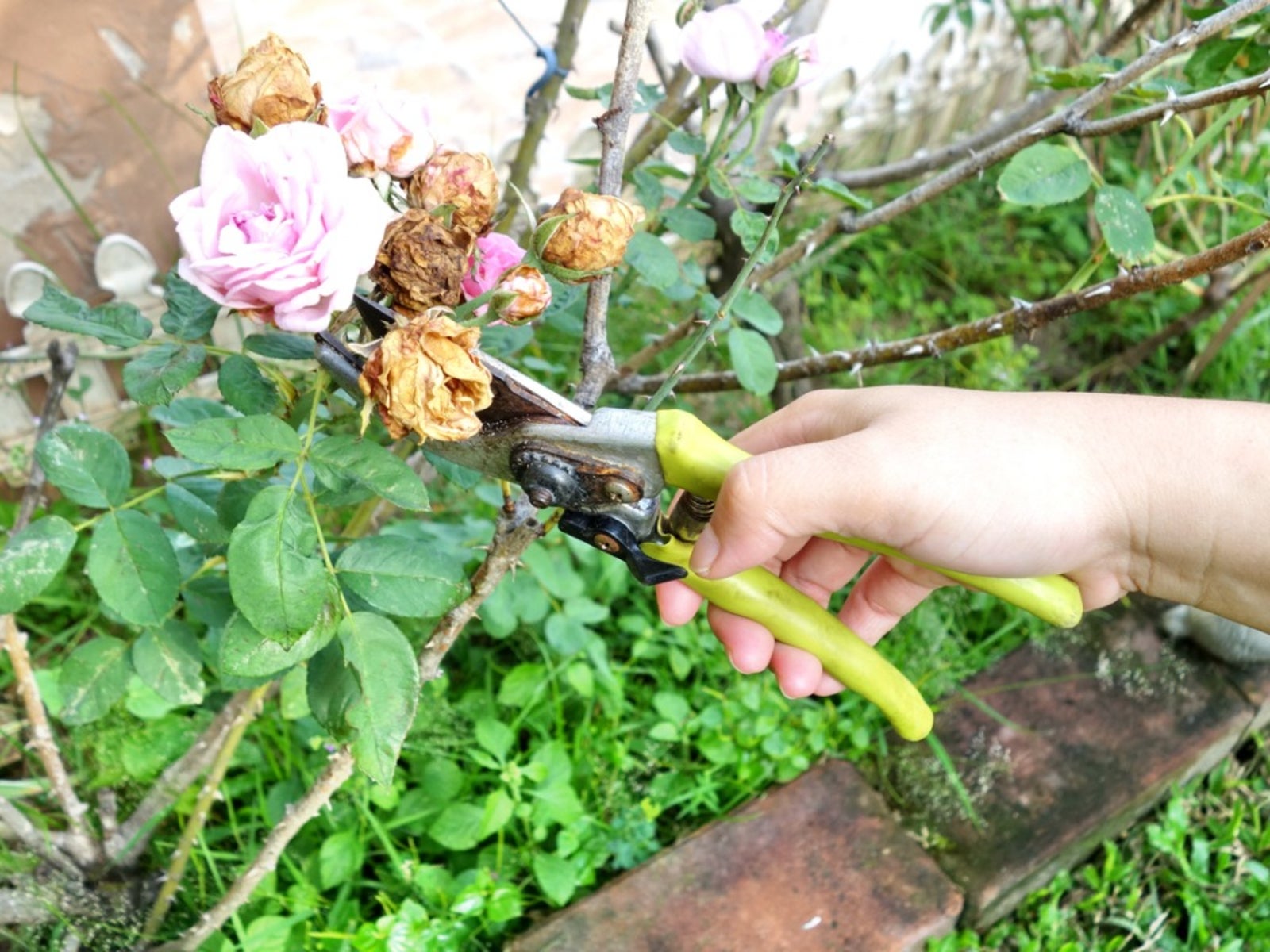Rose Deadheading - How To Deadhead A Rose Plant


Do you find the idea of wanting to deadhead roses intimidating? “Deadheading” roses or the removal of the old blooms from our roses seems to generate some controversy, much the same as pruning them. On the subject of deadheading rose bushes, I recommend using a method that gives you the results you are looking for. Should someone tell you that you are doing it “all wrong,” do not immediately believe that you are. Let's look at two ways to deadhead a rose plant, both of which are perfectly acceptable.
How to Deadhead Roses
5-Leaf Junction Method to Deadhead Roses
The method I prefer to use for deadheading roses is to prune the old blooms off down to the first 5-leaf junction with the cane at a slight angle leaving approximately 3/16 to 1/4 of an inch (0.5 cm.) above that junction. The amount of cane left above the 5-leaf junction helps support the new growth and future bloom(s). The cut ends of the canes are then sealed with a white Elmer's glue. Any white glue of this type will work, but not school glues, as they tend to wash off. The glue forms a nice barrier over the cut end of the cane to protect the center pith from cane-boring insects that will cause damage to the cane and can kill the entire cane and sometimes the rose bush. I stay away from the wood glues, as they cause some cane die-back. The first 5-leaf junction on the rose bush may be aiming in a direction where you do not really want the new growth to go. In such cases, it is fine to prune down to the next multi-leaf to cane junction. Pruning down to the next junction may also be advisable if the cane diameter at the first 5-leaf junction is small and may be too weak to support big new blooms.
Twist and Snap Method to Deadhead Roses
Another method of deadheading, and one that my grandmother used, is to take hold of the old spent bloom and with a quick wrist action snap it off. This method may leave a portion of the old stem sticking up in the air that will die back, thus not really looking so pretty for a while. With some rose bushes, this method will also have some weaker new growth that does not support its blooms well, leading to drooping blooms or bloom clusters. Some rosarians tell me they have used this method for years and love it, as it is quick and easy. I prefer the 5-leaf junction method, as it also gives me the opportunity to do a bit of shaping of the rose bush at this time as well. Thus, when the rose bush blooms again, I can have the look of a beautiful bouquet right there in my rose bed that rivals any such bouquet from the florist shop! Not to mention the benefits of keeping the rose bushes' new growth thinned enough to keep good airflow throughout the bush. Neither deadheading roses method mentioned is wrong. It is all a matter of getting the look you like for your rose bed. The main thing to remember when you deadhead roses is to enjoy your roses and the time spent tending to them brings rewards in many ways. Enjoy your time in the rose bed and garden; they truly are magical places to be!
Gardening tips, videos, info and more delivered right to your inbox!
Sign up for the Gardening Know How newsletter today and receive a free copy of our e-book "How to Grow Delicious Tomatoes".

Stan V. Griep contributed to Gardening Know How for many years, and has been a Colorado Native Rosarian for over four decades. He is an American Rose Society Certified Consulting Master Rosarian in the Rocky Mountain District, and a member of the Denver Rose Society, the Loveland Rose Society, and the American Rose Society. He is Gardening Know How's in-house expert on all things roses.
-
 Looking For Plants To Give You The Soft And Fuzzies? Try These 5 Fuzzy Leaf Plant Options
Looking For Plants To Give You The Soft And Fuzzies? Try These 5 Fuzzy Leaf Plant OptionsLovers of texture, drama, silver foliage and tactile plants will adore these special sensory garden additions. These fuzzy leaf plant options will leave you all aglow
By Susan Albert
-
 Get Ready For A Summer Of Hummers! Grow These Full Sun Hummingbird Plants and Flowers
Get Ready For A Summer Of Hummers! Grow These Full Sun Hummingbird Plants and FlowersIf you’re lucky enough to enjoy a sunny backyard, make sure you are maxing out on your pollinator opportunities and grow these full sun hummingbird plants and flowers
By Tonya Barnett